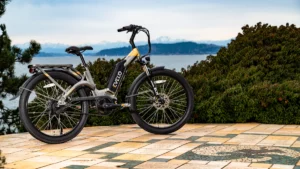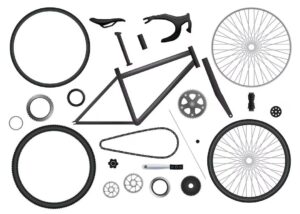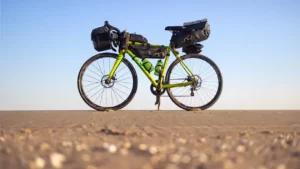The right cassette for your bike can feel overwhelming, especially when considering the debate between a 12 गति बनाम 11 speed system. These options are not just numbers but pivotal choices that affect your riding efficiency, आराम, and overall experience. Whether you’re a seasoned cyclist or a newcomer to biking, understanding the intricacies of 11-speed and 12-speed cassettes is essential. This article delves into their nuances, helping you make an informed decision tailored to your cycling needs.
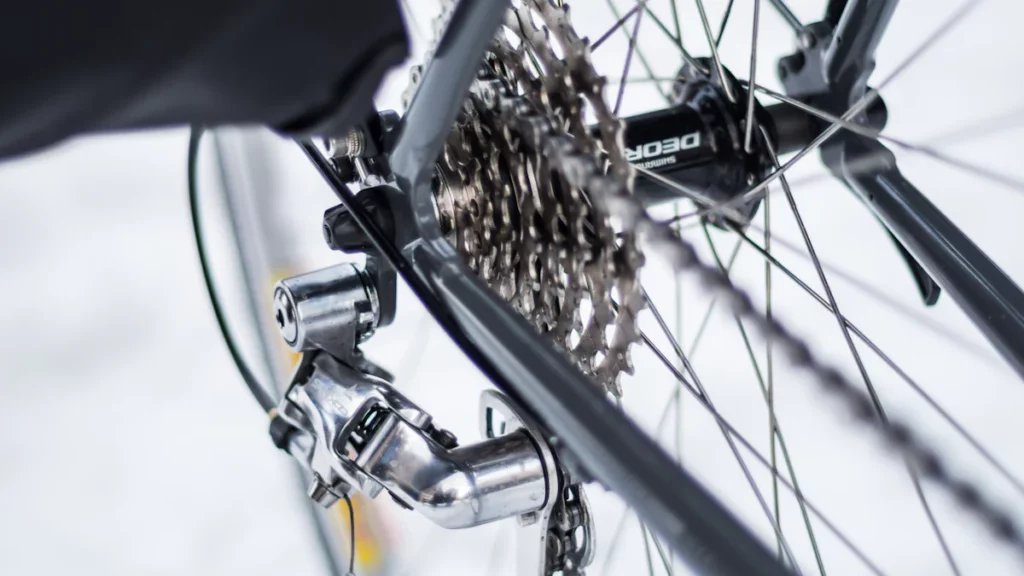
11 गति कैसेट
An 11 speed cassette is a bike component with 11 sprockets mounted on the rear wheel hub. This design allows for smooth shifting and optimal power distribution across various terrains. Key features include a balanced gear range, lighter weight compared to higher-speed cassettes, and compatibility with a wide range of cycling disciplines.


उदाहरण के लिए, a SHINE SOON 11 Speed 11-50T MTB cassette is strong and reliable. It is शिमैनो के साथ संगत 11-speed drivetrains. This makes it versatile without losing performance. To put it on a Shimano HG11 Road freehub body, you need a 1.85mm spacer for 11-36, 11-42, और 11-46 cassettes. If unsure about your freehub type, keep a spacer handy. These cassettes also fit on a 10-speed freehub body. This makes them good for upgrading while keeping old rear wheels.
What ls the Advantage of a 11 गति कैसेट?
The 11-speed cassette offers a balanced range of gears that makes shifting smooth and efficient, helping you tackle different terrains with ease. It’s lighter than a 12-speed, which can make a noticeable difference when climbing hills or accelerating.
Many cyclists appreciate its simplicity and reliability, as it requires less maintenance and is easier to adjust. You might wonder if it provides enough gears for challenging rides—rest assured, an 11-speed cassette delivers plenty of options for road and mountain biking, giving you the flexibility you need without the extra complexity.
है 11 Speed Worth lt for Mtb?
Absolutely, an 11-speed cassette is worth it for mountain biking. It offers a robust and versatile gear range that can handle the diverse demands of off-road cycling. Here are some detailed reasons and data to support this:
- Gear Range: The 11-speed system typically provides a gear range from 11 को 42 teeth or even wider, allowing you to tackle steep climbs and fast descents with ease.
- Weight and Efficiency: An 11-speed cassette is lighter than a 12-speed, which can be crucial during long climbs and technical maneuvers. A lighter drivetrain means less weight to carry uphill, contributing to better overall efficiency.
- Maintenance and Cost: The simplicity of an 11-speed system translates to easier maintenance and lower costs. Parts like chains and derailleurs are generally less expensive and more widely available. According to a survey by BikeRadar, many riders prefer the 11-speed for its balance between performance and upkeep.
When to Use?
An 11-speed cassette is ideal for a broad spectrum of cycling activities. It includes:
- Mixed terrain cycling
- Recreational road biking
- Competitive racing
- General mountain biking
- Long-distance rides
12 गति कैसेट
ए 12 speed cassette includes 12 sprockets mounted on the rear wheel hub, providing a wide range of gear ratios. Key features include finer gear increments for smoother and more precise shifting and an expanded gear range to tackle various terrains. Compared to 11 रफ़्तार, it is ideal for demanding cycling conditions.
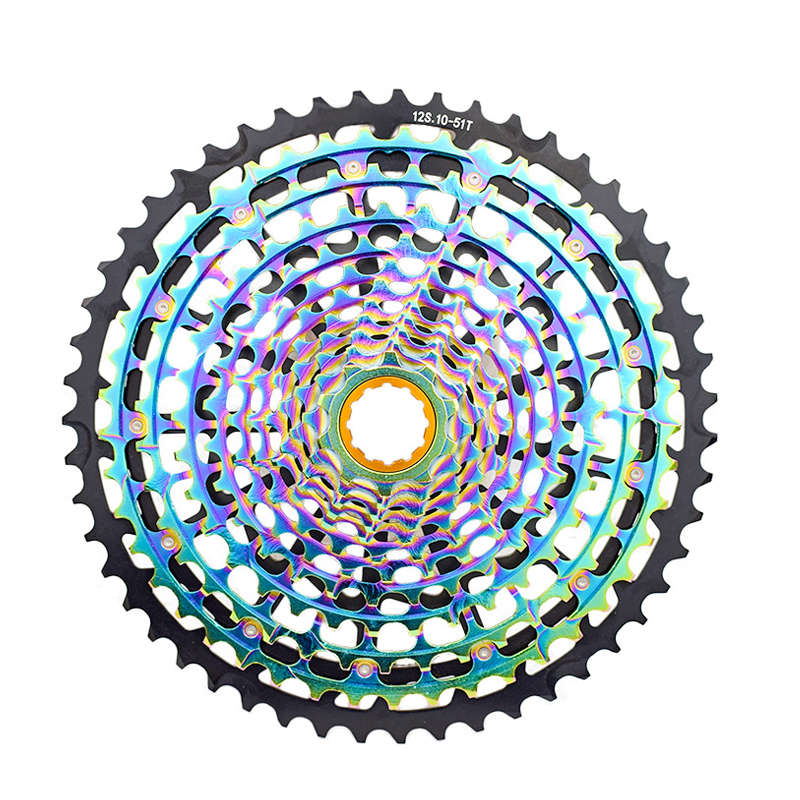
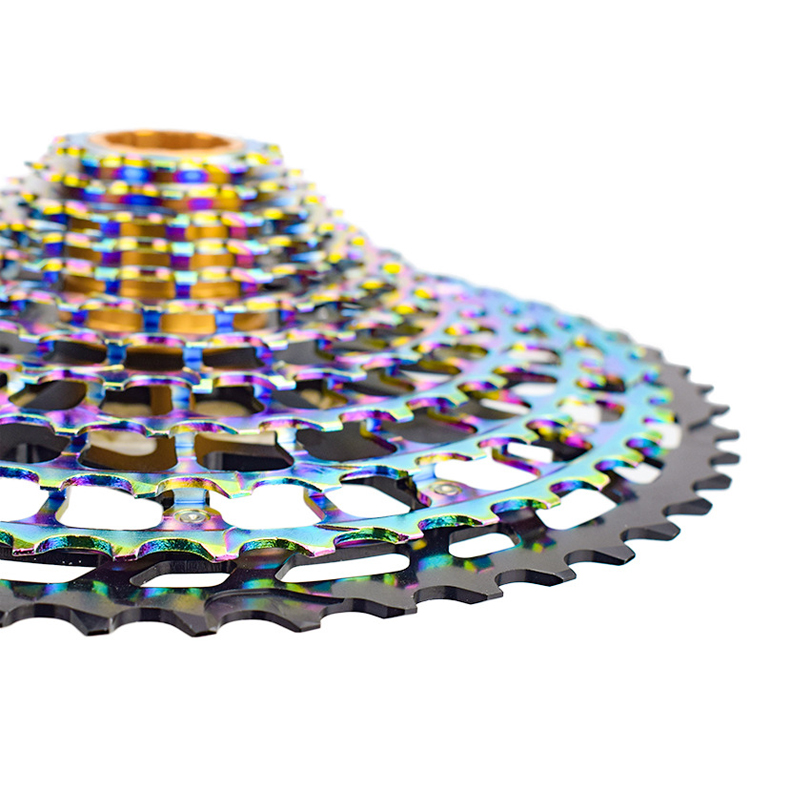
If you’re after top-notch performance for your mountain bike, look no further than the 12 Speed 10-51T MTB cassette compatible with the SRAM XD system. This cassette is a game-changer, offering a lightweight yet robust design that’s not just functional but also stunning in rainbow colors. Its hollow-out structure reduces weight without sacrificing strength, ensuring smooth and precise gear shifts. प्लस, you can even get it custom-designed.
What ls the Advantage of a 12 गति कैसेट?
A 12-speed cassette offers an expanded gear range with smaller increments between gears, providing smoother and more precise shifting. This can enhance performance on varied terrains, allowing for optimal cadence and power efficiency. The finer gear ratios are particularly beneficial for maintaining a consistent pace on climbs and descents.
है 12 Speed Worth lt for Mtb?
हाँ, a 12-speed cassette is worth it for mountain biking. It offers a wider gear range, which is advantageous for tackling steep, तकनीकी मार्ग. The smaller steps between gears allow for better control and smoother transitions, which can be crucial on challenging off-road terrains. While it may come at a higher cost, the performance benefits often justify the investment for serious mountain bikers.
When to Use?
A 12-speed cassette is ideal for various difficult cycling activities. It includes:
- Technical and steep mountain trails
- Competitive mountain biking
- Riders seeking optimal performance and control
- Long and challenging off-road rides
What’s the Difference between an 11 Speed and 12 गति कैसेट?
Different choices between an 11-speed and a 12-speed cassette can significantly impact your cycling experience. Let’s break down the key differences in their number of gears, shifting smoothness, compatibility, and maintenance requirements to help you decide.
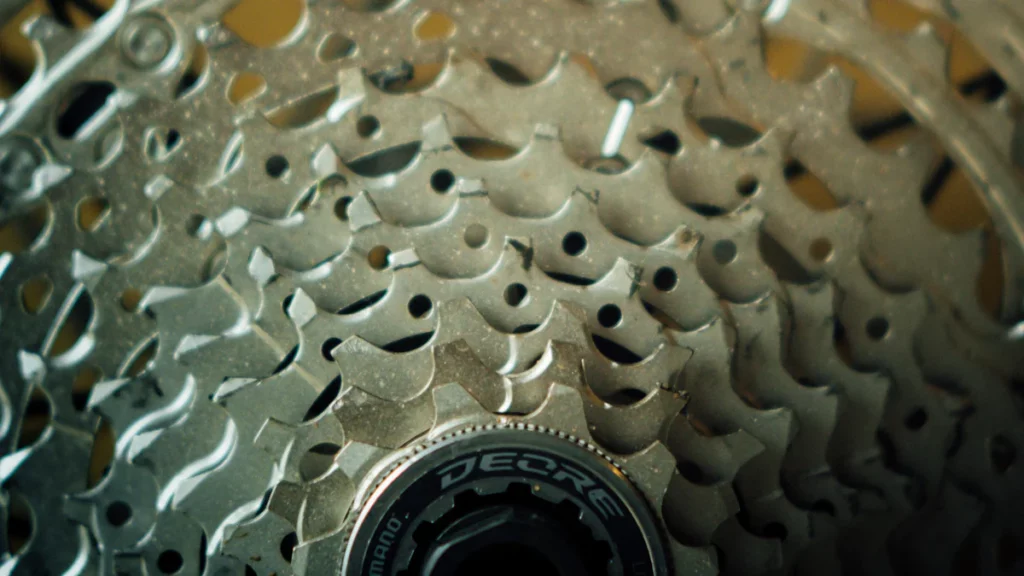
गिअर का नंबर
The most straightforward and key difference between 11-speed and 12 speed cassettes is the number of gears. An 11-speed cassette features 11 sprockets. के विपरीत, a 12-speed cassette includes an additional sprocket, totaling 12.
This extra gear provides a finer gradation between gear ratios, allowing for more precise adjustments. उदाहरण के लिए, a common 11-speed setup might have a gear range from 11-42 teeth, while a 12-speed could extend from 10-51 teeth, offering both a lower low gear and a higher high gear.
Shifting Smoothness
When it comes to shifting smoothness, the 12-speed cassette generally outperforms the 11-speed. The smaller gaps between gears in a 12-speed system allow for more fluid and less jarring transitions, particularly noticeable during climbs and sprints.
Research and user reviews frequently highlight the enhanced shifting experience with 12-speed setups. उदाहरण के लिए, Shimano’s HYPERGLIDE+ technology in 12-speed cassettes enables seamless shifting even under load, a notable upgrade over the 11-speed counterparts.
अनुकूलता
Compatibility can be a significant factor in deciding between the two. An 11-speed cassette is more widely compatible with a range of existing bikes and components. Many bikes come stock with 11-speed drivetrains, making upgrades straightforward and cost-effective.
वहीं दूसरी ओर, a 12-speed cassette often requires specific components such as derailleurs, chains, and shifters designed to handle the narrower chain and tighter spacing. उदाहरण के लिए, upgrading to a 12-speed system may necessitate replacing the freehub body with an XD driver or a Micro Spline, depending on the brand.
Maintenance Requirements
Maintenance requirements differ between 11-speed and 12-speed systems, primarily due to the complexity and precision of the additional gear. An 11-speed system is generally easier to maintain and more forgiving in terms of wear and tear. The components are slightly more robust, and the larger gaps between gears can tolerate more misalignment before performance degrades.
के साथ -साथ, 12-speed systems, while offering superior performance, require more meticulous care. The narrower chain and closer gear spacing mean that even minor wear or misalignment can lead to a noticeable degradation in shifting performance. Regular maintenance, such as frequent chain checks and precise adjustments, becomes more critical with a 12-speed cassette.
What’s the Difference between Shimano, श्रीम, and SHINE SOON Cassette?
When choosing a cassette for your bike, understanding the differences between Shimano, श्रीम, and SHINE SOON is crucial. Let’s explore the distinct performance and durability to help you make an informed decision.
प्रदर्शन
Shimano is renowned for its precise and reliable shifting, with their 12-speed cassettes like the Shimano XTR providing smooth gear transitions and consistent performance under various conditions.
श्रीम, वहीं दूसरी ओर, excels with its innovative technology, such as the X-DOME architecture found in their SRAM Eagle cassettes, which offers exceptional rigidity and clean shifting even in the roughest terrains.
जल्द ही चमकें, while less known, competes by offering performance at a more affordable price. के तौर पर bike cassette manufacturer and supplier, it often produces gear ratios and designs compatible with established brands, making it a viable option for budget-conscious cyclists. If you want to wholesale, private label, or contract manufacturing, its one-stop custom solutions have all you covered.
सहनशीलता
Shimano cassettes are built with high-quality materials and advanced engineering, ensuring long-lasting performance. उदाहरण के लिए, Shimano’s XT cassettes use a mix of aluminum, टाइटेनियम, and steel to balance weight and durability.
SRAM cassettes, particularly their high-end models like the XX1 Eagle, are constructed using a single-piece machined steel design, which significantly enhances their lifespan and resistance to wear.
SHINE SOON cassettes offer respectable durability. During their production process, they use robust materials like aluminum, इस्पात, and alloy, which provide a longer service life compared to other budget options.
How to Choose the Right Bike Cassette: 11 vs 12 गति कैसेट
A perfect-match bike cassette can significantly enhance your cycling experience. The decision between an 11 speed and a 12 speed cassette hinges on your specific needs and preferences. Let’s dive into the key considerations.
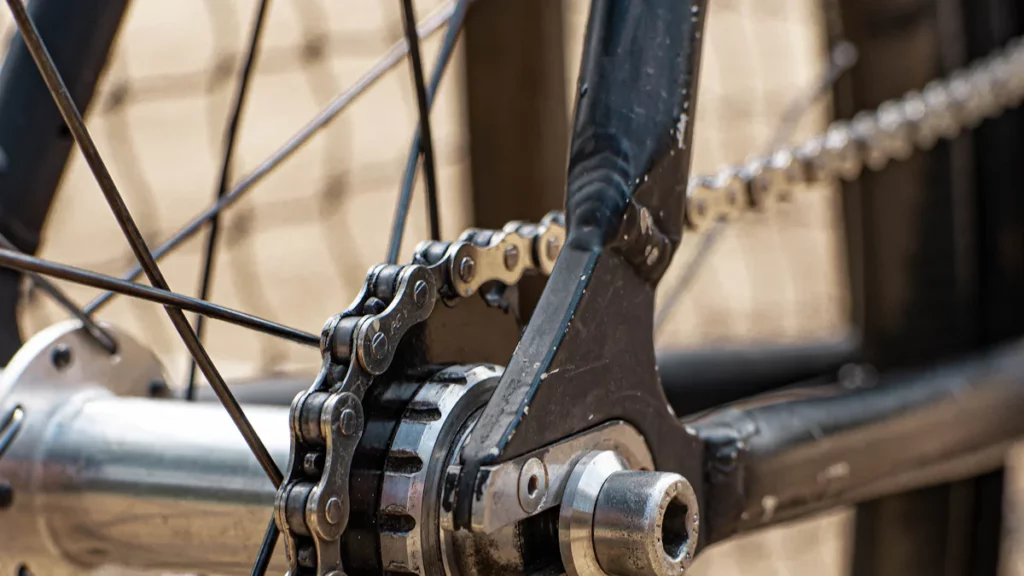
When to Choose 11 गति कैसेट
- Budget-Conscious Upgrades: If you’re looking for an affordable upgrade that offers a solid performance boost, the 11-speed cassette is a great option. It’s easier on the wallet and the components are widely available.
- Simplicity and Maintenance: The 11-speed system is simpler and requires less meticulous maintenance. It’s ideal for riders who prefer a hassle-free, reliable setup.
- अनुकूलता: This cassette is versatile and can be used with both 11-speed and 10-speed freehub bodies, making it an excellent choice for those who don’t want to replace multiple components.
When to Choose 12 गति कैसेट
- Technical and Steep Trails: The 12-speed cassette excels on challenging terrains with its wider gear range and finer increments. It offers better control and smoother transitions, crucial for technical mountain biking.
- Optimal Performance: For serious cyclists seeking the best performance, the 12-speed system provides superior shifting smoothness and efficiency. The additional gear allows for more precise adjustments and better cadence maintenance.
- Future-Proofing: If you’re planning long-term and want to ensure your setup remains top-notch, investing in the 12-speed cassette is worthwhile. Despite the higher initial cost, its advanced features justify the investment for dedicated riders.
Can You Put a 12 Speed Cassette on a 11 Speed Bike?
As the SunRace Mechanics explains, “You can put a 12-speed cassette on an 11-speed bike, but it must be done carefully. The gear spacing needs to match for smooth shifting. Upgrading to a 12-speed cassette can make your rides better, especially on tough trails.”
अलावा, riders on the Singletrackworld Forum also share their thoughts about using an 11-speed setup:
- Better for daily rides
- Lasts longer because small cogs are easier to replace
इसलिए, while switching to a 12-speed cassette has benefits, keeping an 11-speed system might be simpler for everyday biking. But if you want to upgrade your bike with 12 गति कैसेट, additional modifications are needed. These may include upgrading the derailleur, shifters, and potentially the freehub body. Here are 6 steps to install a 12 speed on 11 speed bike.
6 Steps to Install a 12 Speed Cassette on an 11 Speed Bike
You can indeed install a 12-speed cassette on an 11-speed bike, but it involves several steps and considerations to ensure compatibility and proper functioning of your drivetrain. Here’s how you can do it:
Step 1: Check Freehub Compatibility
Most standard 11-speed freehub bodies won’t accommodate a 12-speed cassette directly. You’ll likely need to switch to a freehub that supports 12-speed cassettes, such as an SRAM XD or Shimano Micro Spline.
Step 2: Install a Spacer
अगला, if you’re sticking with your current freehub, you may need to install a spacer. This spacer helps adjust for the narrower 12-speed cassette on the wider 11-speed freehub body, ensuring a snug fit and proper alignment of the cassette.
Step 3: Upgrade the Derailleur
An upgraded 12-speed cassette also necessitates a compatible derailleur. An 11-speed derailleur won’t be able to handle the wider range of gears offered by a 12-speed cassette. You’ll need to invest in a 12-speed derailleur that matches the brand of your cassette, be it SRAM, or Shimano, to ensure smooth and precise shifting.
Step 4: Replace the Shifter
इसके अतिरिक्त, since 12-speed cassettes require specific shifter designs due to different cable pull ratios, you’ll need to replace your 11-speed shifter with a compatible 12-speed version. This ensures that your shifting remains crisp and responsive with the new cassette setup.
Step 5: Check Chain Compatibility
A 12-speed cassette requires a narrower chain compared to an 11-speed setup. Swapping out your existing 11-speed chain for a 12-speed chain ensures that it meshes seamlessly with the cassette’s smaller sprockets, promoting smooth shifting and longevity.
Step 6: बी-स्क्रू को समायोजित करें
Finally, adjusting the B-screw on your derailleur becomes necessary. This adjustment fine-tunes the derailleur’s position relative to the cassette, accommodating the different spacing between the 12-speed gears. It helps maintain proper chain tension and prevents issues like chain skipping or excessive noise during gear changes.
निष्कर्ष
निष्कर्ष के तौर पर, the 12 गति बनाम 11 speed cassette debate boils down to your unique cycling requirements and preferences. An 11-speed system offers reliability and versatility, ideal for mixed terrain and general use. के विपरीत, a 12-speed cassette provides advanced performance, smoother shifting, and a wider gear range, perfect for competitive and technical rides. Suppose you carefully consider your riding style, इलाके, and budget. In that case, you can select the cassette that best enhances your biking experience, ensuring every ride is as efficient and enjoyable as possible.

